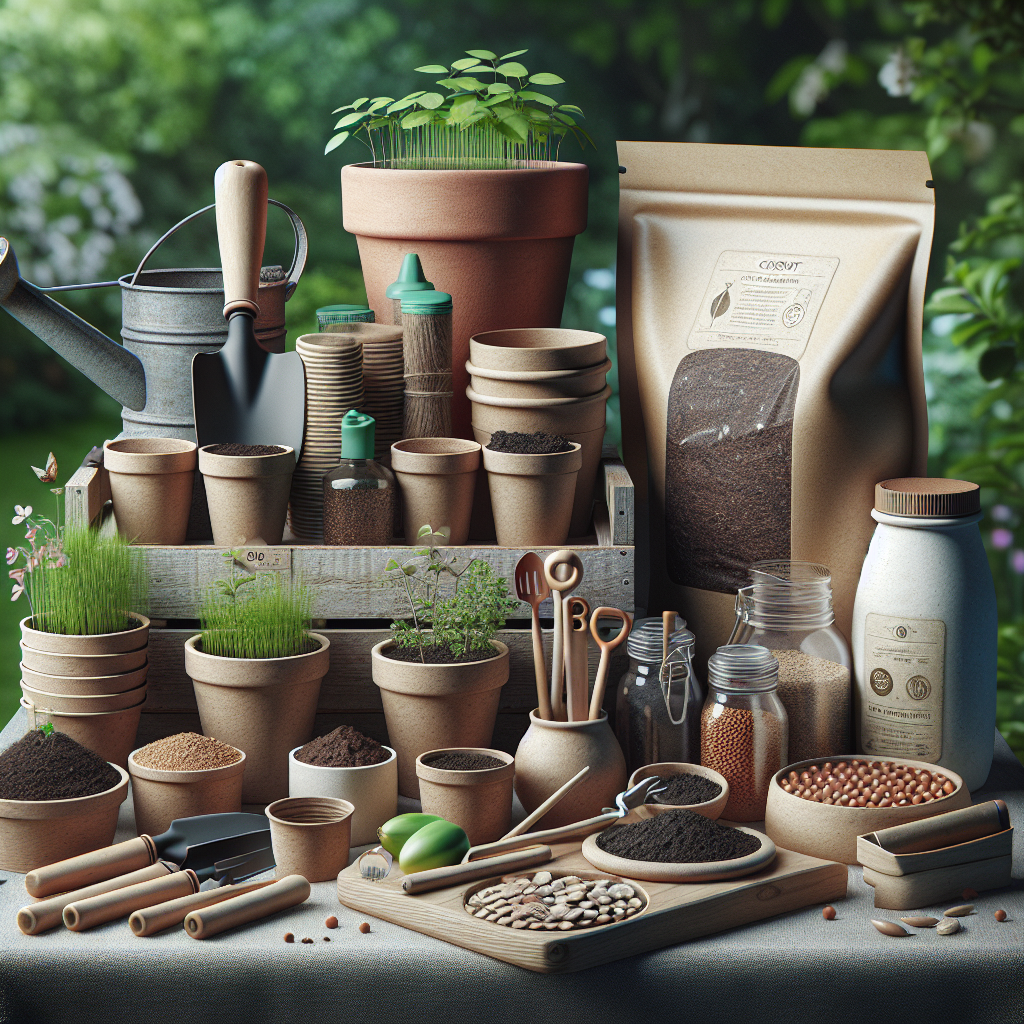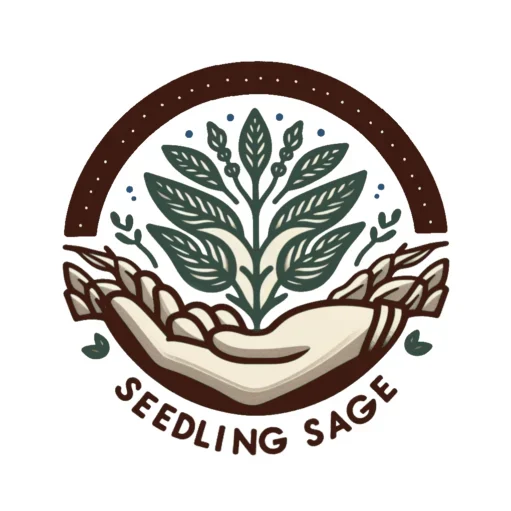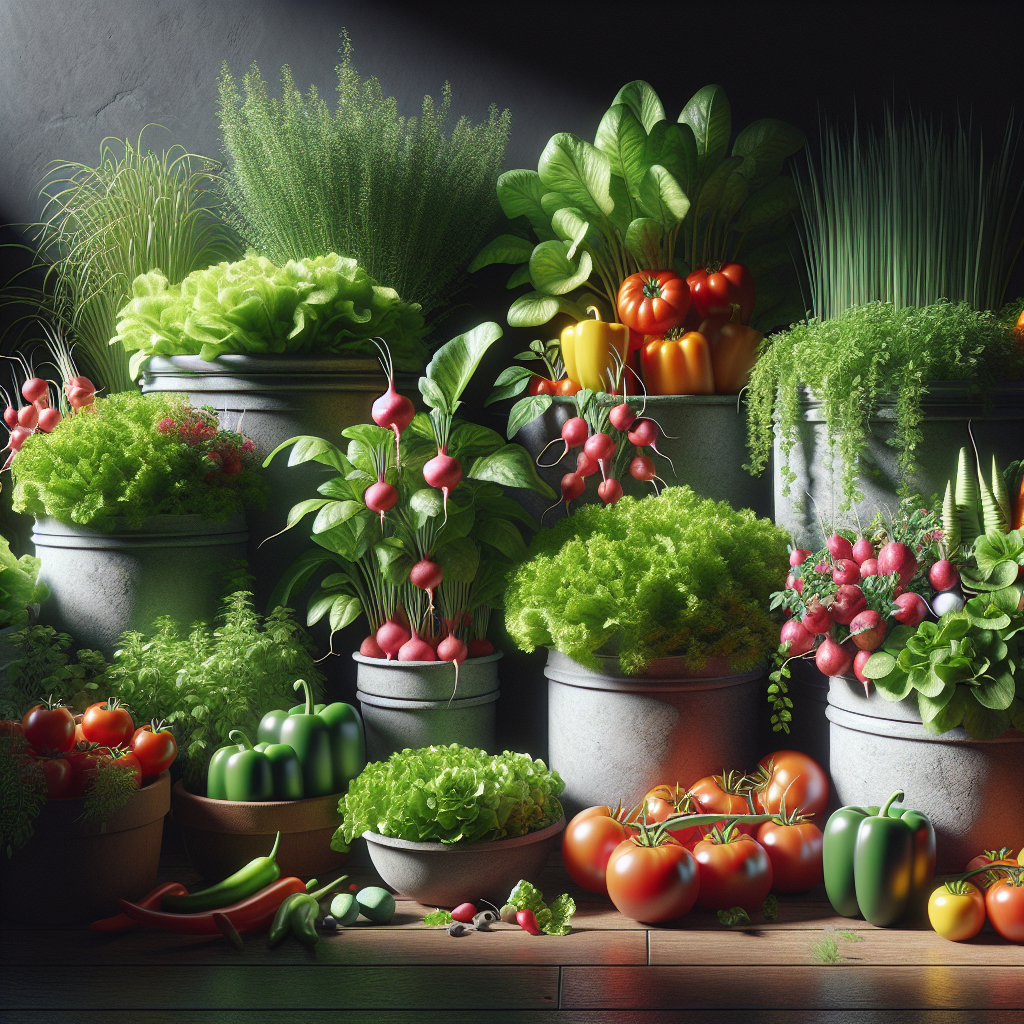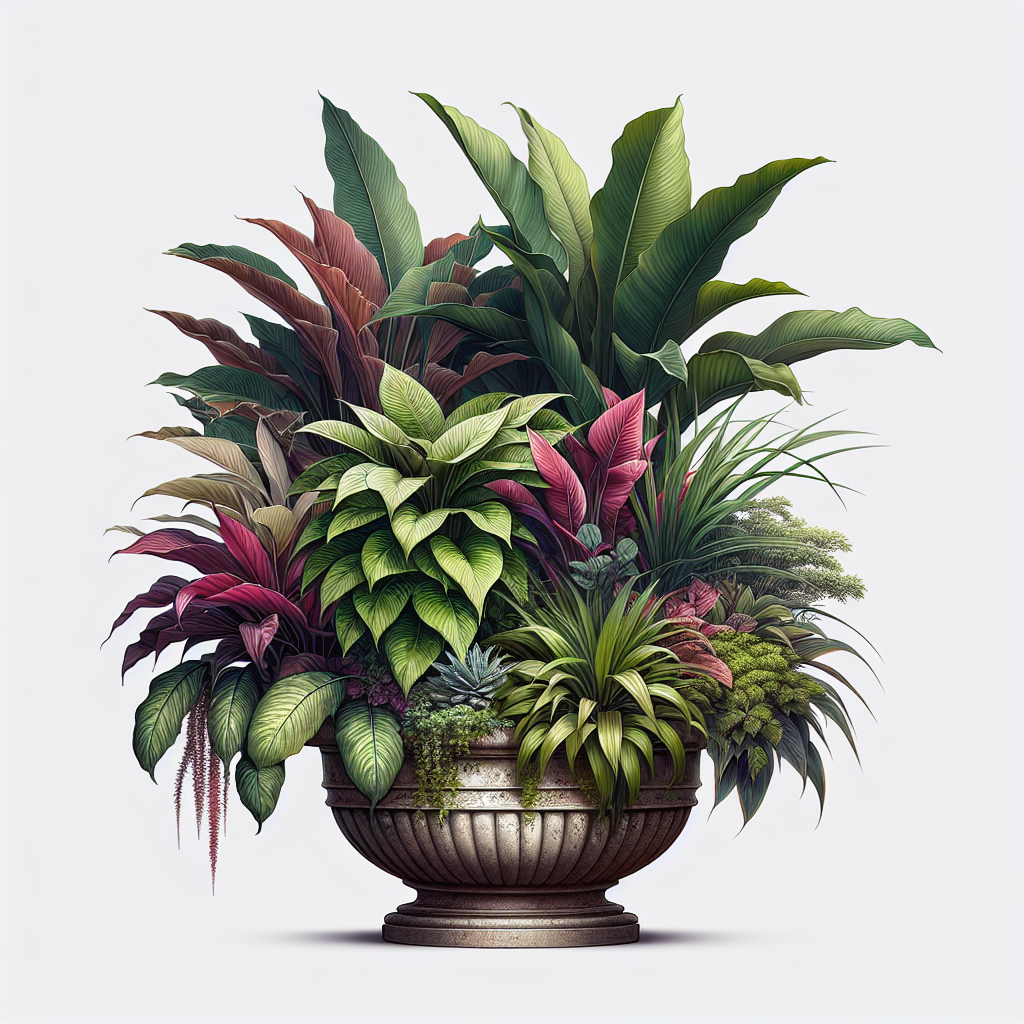The Ultimate Guide to Organic Container Gardening Supplies for Urban Spaces
November 11, 2024 | by Emma Sage

ORGANIC CONTAINER GARDENING SUPPLIES
11 min read
Discover my favorite organic container gardening supplies for urban spaces and grow green with ease!
Essential Supplies for Organic Container Gardening
Starting out on my urban gardening adventure, I quickly found that having the right gear makes a world of difference. For organic container gardening, honing in on two must-have items—organic soil mixes and organic heirloom seeds—has been key to creating a thriving green nook even with tight space.
Organic Soil Mixes
Getting started, I quickly grabbed a top-notch organic soil mix. It’s super important to grab soil that drains well without being jam-packed with too many nutrients. I learned to steer clear from ordinary garden mixes and straight-up ground soil, since they often cause issues with drainage and nutrient balancing. So, I went for mixes specifically crafted for containers, found at my local garden joints.
Making my own organic soil mix turned out to be a neat little project, too. This mix usually consists of compost, sand, perlite, and a basic fertilizer. This mix keeps my plants in tip-top shape without drowning them in too much goodness (Gardening Know How).
| Soil Component | Purpose |
|---|---|
| Compost | Gives vital nutrients |
| Sand | Makes drainage better |
| Perlite | Lightweight and aids in getting air to roots |
| All-Purpose Fertilizer | Provides nutrients steadily |
To get the best for my container setup, I always look up the best organic soil for container gardening.
Organic Heirloom Seeds
Next up, I always grab organic heirloom seeds. These little packets usually run under five bucks, so they’re a wallet-friendly choice for growing your own ingredients. Heirloom seeds offer a burst of different tastes and colors, letting me grow organic, nutrient-rich food right at my fingertips (The Well Co).
The joy of using heirloom seeds is unmatched, as they often produce more than I expected. Whether it’s tomatoes, peppers, or herbs, watching my seeds grow into a full harvest is something special. Seed packets often come with details on pot sizes suitable for each plant, which has made choosing containers a no-brainer (The Well Co).
To sum it up, kicking off with good organic soil and heirloom seeds is the secret to a thriving organic container garden. As I continue to care for my little urban oasis, these supplies stay at the top of my list for a fruitful and wholesome haven. If you’re starting out, diving into organic container gardening for beginners will open up more helpful hints and tricks.
Container Selection and Maintenance
When I first dipped my toes into organic container gardening, I was honestly clueless about how picking the right containers and keeping them in good shape mattered for my plants. So, here’s some simple advice on getting the right-size pots and nailing the watering part.
Choosing the Right Size Containers
The right pot can make all the difference in the world for your plants. Different herbs and veggies have their own “room” needs, usually listed on seed packets. Here’s a handy chart for common plants and how much room they like:
| Plant Type | Recommended Container Size |
|---|---|
| Herbs | 6-8 inches wide |
| Leafy Greens | 12-18 inches wide |
| Tomatoes | At least 5 gallons |
| Peppers | 3-5 gallons |
| Carrots | 12-16 inches deep |
| Beans | 10-12 inches deep |
Getting the right pot size helps roots spread out nicely, leading to healthier plants. Wanna know more about starting a garden? Try organic container gardening for beginners.
Proper Watering Techniques
Watering can make or break your garden. I’ve noticed my plants guzzle up extra water, especially when summer turns up the heat. Generally, if the soil feels dry, it’s time to water. Good drainage prevents drowning those poor roots.
Some practical tips for watering:
- Check the Soil: Stick a finger in—if it’s dry around an inch down, grab the watering can.
- Drink Up but Not On The Leaves: Aim your watering can at the base to skip any leaf-related diseases.
- Let it Drain: Ensure your pots have holes so the extra water gets a way out, avoiding soggy roots.
For more tips on keeping it green and clean, check out organic fertilizers for container plants.
By keeping these tips in mind, you’ll build a flourishing organic container garden, even in small spaces. Happy growing!
Organic Fertilizers for Container Gardening
Nailing the right fertilizer is a game-changer for container gardening. These organic nutrients, my garden’s secret sauce, help my plants flourish, even in cramped spaces. I lean on slow-release fertilizers and good ol’ compost. Here’s the lowdown from my green-thumbed adventures.
Slow-Release Organic Fertilizer
Slow-release fertilizers are the MVPs in my container gardening playbook. They drip-feed plants nutrients over time, avoiding the “feast or famine” syndrome and keeping everything humming along The Well Co.
What’s Cool About It:
| Benefit | What It Does |
|---|---|
| Steady Nutrition | Keeps plants well-fed over time, no rollercoaster diets here. |
| Less Run-off | Stays put in the soil, not down the drain. |
| Easy Peasy | One sprinkle can last ages, so more chill and less fuss. |
These typically come as granules I scatter on the soil’s surface and mix in a bit. Good picks are ones that use stuff like bone meal or soy cakes.
Getting into container gardening? Check out some resources on organic fertilizer for container plants.
Nutrient-Rich Compost
Compost: the unsung hero of my container garden toolkit. As The Prairie Homestead points out, compost is mother nature’s magic potion, packing soil with goodies galore.
Why Compost Rocks:
| Advantage | What’s the Deal |
|---|---|
| Nutrient Density | Loads the soil with essential, plant-friendly nutrients. |
| Soil Wizardry | Improves texture and helps soil hold onto moisture like a sponge. |
| Earth-Friendly | Turns kitchen scraps into black gold, keeping trash in check. |
I whip up compost from kitchen scraps, yard odds and ends, and the result? A top-notch soil booster. For starters, a small bin makes diving into composting a breeze.
For those just starting out, finding the groove for mixing compost into containers is key. Try delving into organic container gardening for beginners for a solid head start.
When it comes down to it, slow-release fertilizers and rich compost have my back. They build the perfect, sustainable space where my city garden sprouts with life, bursting with greens that are here to play the long game.
Soil Amendments for Organic Container Gardening
As I’ve stumbled down the path of mastering organic container gardening supplies, I’ve figured out that tinkering with the soil is like giving your plants a five-star meal. Of all the amendments I’ve tried out, compost and manure hit the top of the feed charts, making my green friends happier than a worm in fresh dirt.
Compost as Soil Enrichment
Consider compost as the secret sauce to plant happiness. It’s just a collection of rotted-down organic stuff, but it’s pure gold for the soil. Whether it’s chunky heaps or a liquid brew (the infamous compost tea), adding it to your garden can have plants shooting up like they’re on a plant-based supercharged diet. I’m picky with my compost source, making sure it’s free of nasties that could wreck my veggies (The Prairie Homestead).
| Compost Type | Nutrient Perks | Quick Note |
|---|---|---|
| Kitchen Scraps | Loads of nitrogen, potassium | Stick to veg bits only |
| Yard Waste | Rich in carbon and phosphorus | Go for leaves, grass bits |
| Manure Compost | Packed with nitrogen, micros | Age it well |
Compost doesn’t just feed the plants; it buffs up the soil’s charm and character, making root growth smoother than a grooving dance floor. Earthworms adore this rich ground and thrive, aerating the soil like little natural tillers while keeping the nutrient cycle ticking (GlobalOwls).
Beneficial Manure Options
Next on the soil magic list is organic manure – your garden’s all-natural multivitamin. Picking the right type can set your growing space up for a plant bonanza.
| Manure Type | What’s In It | Dos & Don’ts |
|---|---|---|
| Cow Manure | Good balance of key nutrients | Compost it well |
| Chicken Manure | High in nitrogen | Dilute first, then apply |
| Horse Manure | Nicely balanced | Let it stand – weeds hate that |
Throwing well-aged manure into the mix turbocharges the soil’s health and structure. It’s not just a nutrient bump; it’s about making sure my plants have room to breathe and grow tall and strong (Green Thumb).
When I mix compost and stellar manure, it’s like throwing the ultimate garden party, with a diverse guest list from the biodiverse world. My container plants groove through every season, well-fed and content.

Tools for Successful Organic Container Gardening
When I get my hands dirty in organic container gardening, I quickly realize that having the right gear is a game-changer. A couple of must-haves in my garden shed are planting containers and trays to start seeds on the right foot.
Planting Containers
Planting containers? Yeah, they’re your garden’s MVP. They give my green friends a cozy little home, letting me keep their growth in check. Picking the right container is key ’cause its material and size can seriously impact how my plants flourish.
Here’s a handy chart to break it down:
| Container Type | Pros |
|---|---|
| Plastic | Easy to lift, doesn’t break the bank, super flexible |
| Clay | Breathes easy, and holds onto just the right amount of water |
| Fabric | Root-friendly and drains like a dream |
| Wooden | Looks pretty and keeps roots snug in winter |
Hungry for more container wisdom? Check out organic veggie pot gardening because, trust me, the right container can turn your thumb a deeper shade of green. Wanna know more about keeping things organic? Have a look at Grow Organic.
Seed-Starting Trays
Seed-starting trays, now they’re my secret weapon. They help me give seeds the VIP treatment before moving them into bigger pots. These trays set the stage for a strong start, making sure each little sprout has the best shot.
Most trays come with separate spaces, perfect for a mixed bag of seeds without them feeling cramped. Check out these features:
| Tray Feature | Benefits |
|---|---|
| Cell Dividers | No elbow-hogging, just comfy stretching for roots |
| Drainage Holes | Keeps roots from drowning, avoids bad vibes like rot |
| Clear Domes | Locks in moisture and turns up the heat like a mini-greenhouse |
Stopping by the seed-starting station has seriously upped my game, giving me the confidence to grow a mixed patch all year long. If you’re just getting started, hit up organic container gardening for newcomers for a crash course on the basics.
Spending a bit on good stuff like planting containers and seed-starting trays has turned my garden time into a fun and fulfilling hobby. Remember to treat your plants with organic fertilizer for container buddies and grab the top-notch organic soil for pots to give ’em a boost as they grow.
Pest Control and Environmental Practices
Hey there, I’m your friendly neighborhood eco-gardener, constantly searching for ways to manage those pesky critters without turning my tiny urban garden into a chemical battlefield. I’ve discovered that inviting the right bugs and planting a mix of diverse plants offers a harmonious balance, something like a little green utopia in my own container garden.
Beneficial Insects for Pest Control
Turns out, there are some insects you actually want in your garden. I like to think of them as my little bug bodyguards. Gardening guru Suzanne Wainwright-Evans swears by using beneficial bugs before even thinking about pesticides, and I couldn’t agree more. They’re like the garden’s version of superheroes, keeping those annoying pests under control.
Here’s a rundown of the bug VIPs in my garden:
| Bugs I Adore | What They Do | Who They Handle |
|---|---|---|
| Ladybugs | Snack on aphids and mealybugs like it’s a buffet. | Aphids, mealybugs |
| Syrphid Flies | Their kids (larvae) chomp down on aphids, keeping things balanced. | Aphids |
| Lacewings | Gobble up a whole range of troublemakers, from aphids to whiteflies. | Various pests |
These little critters are the unsung heroes of my garden, helping me keep everything in line without needing a drop of those nasty chemicals! You can dig a bit deeper into this in an article I found on organic vegetable container gardening.
Going Green with Plant Variety
Switching gears to plants – having a mix isn’t just about pretty flowers. It creates a bug-friendly neighborhood, encouraging helpful insects to move in. Plants like alyssum, nasturtiums, and yarrow spice up my garden’s looks while drawing in beneficial insects, as Joe Gardener suggests. Here’s my top picks for planting a bug buffet:
| My Go-To Plants | How They Help |
|---|---|
| Alyssum | Rolls out the green carpet for lacewings and buzzing pollinators. |
| Nasturtiums | Not only keep aphids away but also invite the good bugs over. |
| Yarrow | Lures ladybugs and other pest-eating pals. |
Adding these plants has not only turned my garden into a prettier place but it also feels healthier and happier. If you’re just dipping your toes into gardening, check out this nifty guide on organic container gardening for beginners.
In mixing these pest-busting strategies with my preferred organic tools, I get to savor the fruits of my labor right in my urban space. I find joy in knowing that while I pick tomatoes or snip fresh herbs, I’m also dancing in step with nature’s rhythm.
Happy Gardening,
Emma Sage
RELATED POSTS
View all



